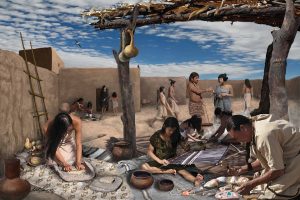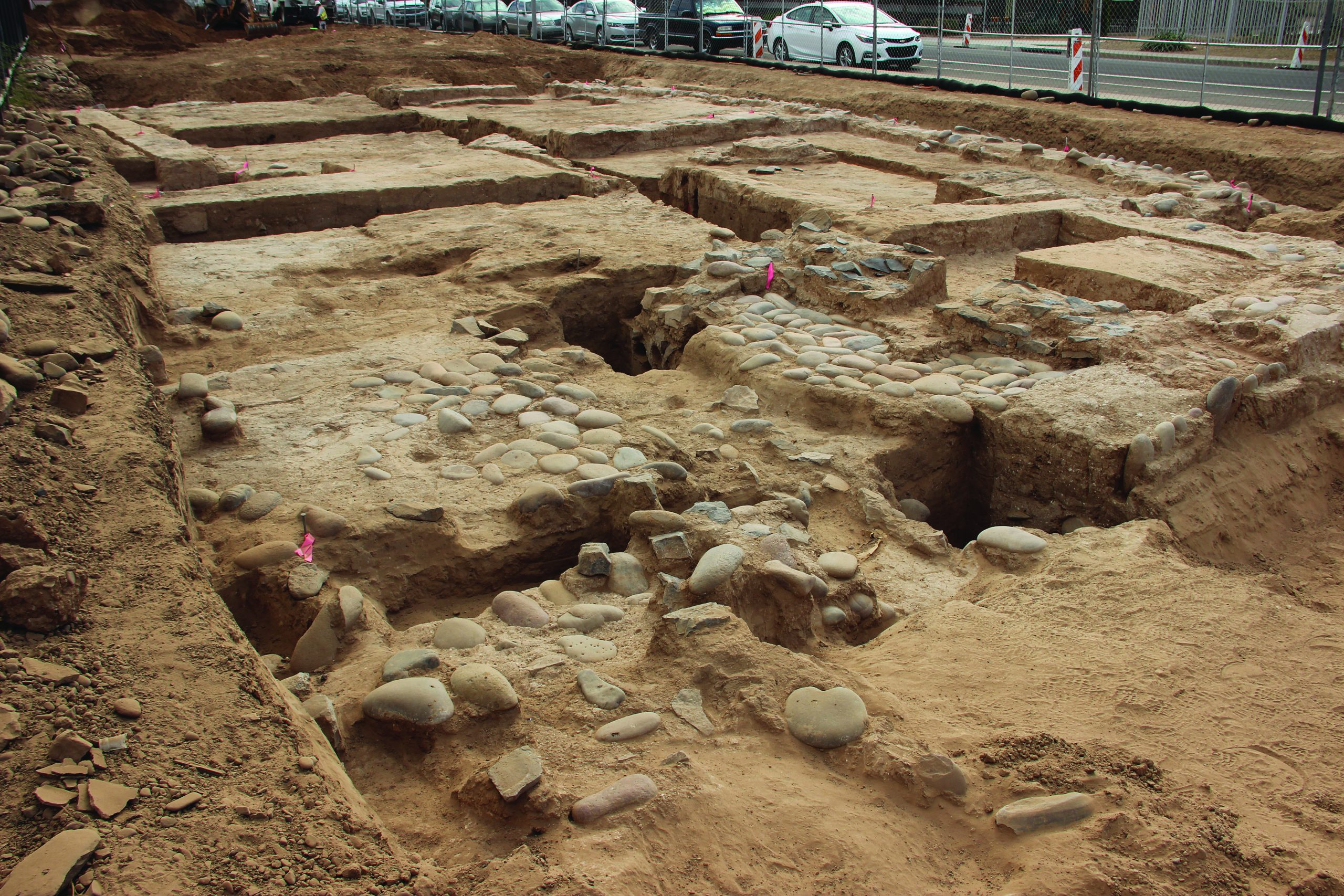By Tamara Jager Stewart
Archaeological investigations in advance of a street-improvement project in Tempe, Arizona, have revealed a rare, multi-storied ceremonial structure associated with an ancient village built by Ancestral O’Odham, who lived in the area now known as the Phoenix Basin for more than 1,000 years, and whose descendants continue to do so today. Discovered in 2018, the massive structure belongs to a category of ancient ceremonial architecture known in the O’Odham language as vapaki (va’aki, singular). The structure is part of a sprawling, ancient Hohokam village located at the base of Oidbaḍ Do’ag, a prominent landmark on the south bank of the Salt River. The butte—with its ancient petroglyph panels, small habitations, and terraced gardens—is a traditional and sacred place to the O’Odham. These large village sites with their impressive ceremonial houses are best understood as part of a broader cultural landscape spanning millennia that encompassed natural and cultural landmarks linked by the expansive irrigation systems—extending thousands of miles to distant places via social, cultural, and economic networks. The Hohokam maintained long-distance trade connections with groups from the Pacific Coast to the Plains and down into central Mexico, obtaining exotic goods such as macaws, copper bells, pyrite mirrors, mosaics, and shells for making jewelry.

An artist’s rendition depicts life in the Casa Grande community around A.D. 1300. The data collected at Feature 7 in Tempe suggests a similar range of activities likely took place during the years of use at the multi-story va’aki.
Photo Credit: Robert B. Ciacci / Desert Archaeology, Inc.
In conjunction with the Arizona Department of Transportation and the Federal Highway Administration, the City of Tempe is constructing a Multi-Use Path (MUP) and Streetscape Improvement project along Eighth Street between Rural Road and McClintock Drive. “Because the project area crosses through a site known to be highly culturally sensitive, the decision was made to engage in pre-construction data recovery to ensure … resources were not negatively impacted,” said Tempe’s Historic Preservation Officer Zachary Lechner. Archaeologists have known about the village site, named La Plaza, since the Hemenway Southwestern Archaeological Expedition (1886-1894) and in 2001, rediscovered intact cultural deposits related to La Plaza along Eighth Street. But they did not fully appreciate its cultural significance until recently. A series of studies conducted by the cultural resource management firm Logan Simpson, Inc. between 2017 and 2019 revealed the true extent of the village and the va’aki it contained, which dates to the A.D. 1300s. Excavations took place in 2018 and 2020 within the right-of-way of the former Maricopa & Phoenix & Salt River Valley Railroad. The Logan Simpson research team dug 167 excavation units, including mechanical trenches, to reveal features associated with the railroad, Eighth Street (formerly U.S. Route 80), portions of the historic Tempe-Hayden Canal System, and La Plaza. Lechner said the City was “surprised by both the extent of those findings and the well-preserved state of many features, particularly the Ancestral O’Odham ceremonial house (va’aki) known as Feature 7.” Principal Investigator Travis Cureton of Logan Simpson shared the sentiment, describing the project team as “utterly astonished” to discover the structure because it had been missed by more than 100 years of intermittent archaeological work within the site.
The va’aki at La Plaza is one of eight structures of its kind in the Phoenix Basin. The best-preserved example of a multi-story va’aki is located at Casa Grande Ruins National Monument—50 miles southeast of Tempe and and known to the O’Odham as Sivañ Va’aki.




